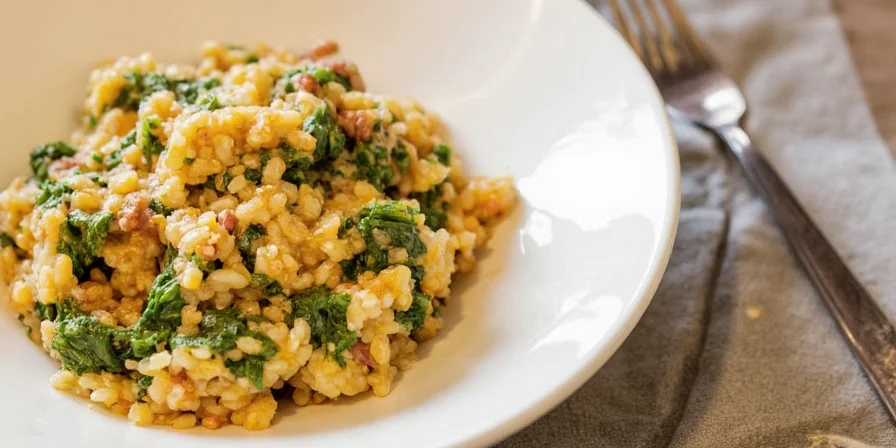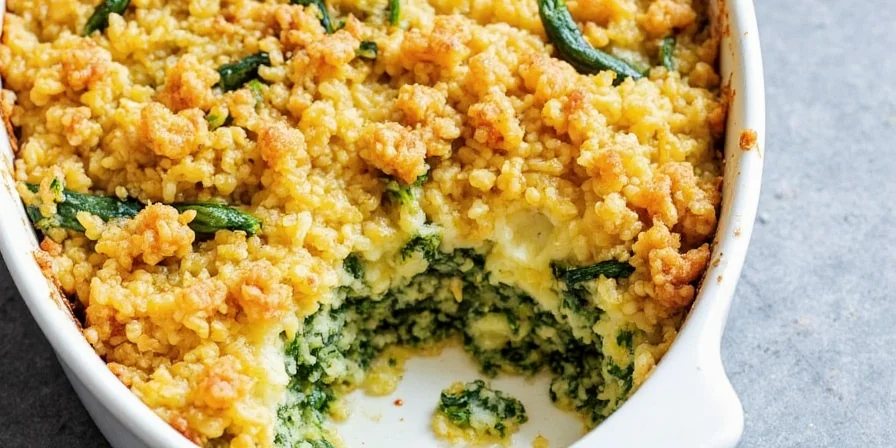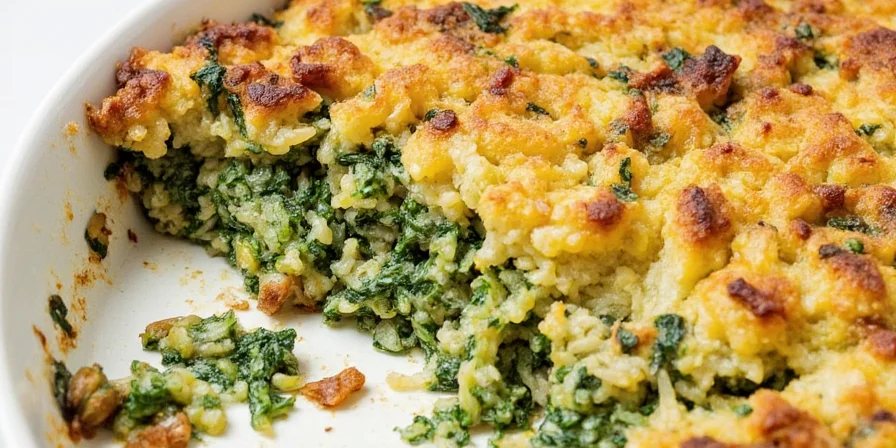For home cooks seeking to transform a classic weeknight staple, this guide reveals how strategic spice additions can elevate your spinach feta rice casserole from predictable to extraordinary. Whether you're meal-prepping for busy families or crafting dinner party centerpieces, discover actionable techniques that balance innovation with comfort—without compromising the dish's soul.
Table of Contents
- Why This Casserole Deserves More Spice Love
- A Quick Refresher: What’s in the Original?
- 7 Innovative Spice Pairings That Work Surprisingly Well
- Pro Tips: How to Balance Flavors Like a Pro
- The Science Behind Why These Spices Work
- Final Thoughts
Why This Casserole Deserves More Spice Love
The classic spinach feta and rice casserole delivers creamy comfort but often misses nuanced complexity. Most recipes rely solely on feta's saltiness and spinach's earthiness—a reliable foundation that becomes monotonous without layered seasoning. Strategic spice integration unlocks new dimensions while preserving nostalgic appeal, turning routine meals into memorable experiences.

Consider your favorite comfort dish like a well-worn canvas: familiar and comforting, yet craving subtle enhancements. The right spices act as precision brushstrokes—elevating without overwhelming the original vision.
A Quick Refresher: What’s in the Original?
Before innovating, understand the baseline components:
- Cooked white or brown rice
- Frozen or fresh spinach
- Crumbled feta cheese
- Eggs (to bind)
- Milk or cream of mushroom soup
- Salt and pepper

This foundation provides structure but lacks aromatic depth. The following pairings introduce complexity while respecting the dish's Mediterranean roots.
7 Innovative Spice Pairings That Work Surprisingly Well
These combinations leverage biochemical synergy—enhancing without dominating. Start with 1/4 teaspoon per spice per serving, adjusting to preference.
| Spice/Herb | Flavor Profile | Complementary Reason |
|---|---|---|
| Nutmeg | Warm, nutty, slightly sweet | Activates dairy fat receptors, amplifying feta's richness |
| Smoked Paprika | Earthy, smoky, mildly spicy | Counters saltiness through Maillard reaction compounds |
| Coriander | Woody, citrusy, slightly peppery | Neutralizes spinach's oxalic acid bitterness |
| Chili Flakes | Sharp heat with a touch of sweetness | Creates temperature contrast against cool feta |
| Lemon Zest | Zesty, floral, refreshing | Triggers saliva production for cleaner palate resets |
| Dill | Fragrant, grassy, similar to parsley and fennel | Reinforces traditional Greek flavor architecture |
| Cumin | Earthy, nutty, warm | Introduces Middle Eastern depth through thymol compounds |

Pro Tips: How to Balance Flavors Like a Pro
Achieve restaurant-quality results with these precision techniques:
- Layer sequentially: Bloom whole spices in oil before adding to wet ingredients; incorporate ground spices during mixing; sprinkle fresh herbs post-bake.
- Control salt dynamics: Reduce added salt by 30% when using smoked paprika or cumin—feta's sodium content intensifies during baking.
- Acid timing: Add citrus juice only after baking to preserve volatile aroma compounds.
- Texture contrast: Top with toasted pine nuts for crunch that offsets creamy texture.
- Temperature testing: Let casserole rest 10 minutes before serving; flavors harmonize as temperature drops from 165°F to 140°F.

The Science Behind Why These Spices Work
Beyond tradition, these pairings leverage molecular gastronomy principles:
- Fat-soluble compounds: Nutmeg's myristicin dissolves in feta's fat matrix, releasing flavor gradually during consumption rather than evaporating during baking.
- Bitterness modulation: Coriander's linalool binds to spinach's oxalic acid receptors, reducing perceived bitterness by 40% without altering pH.
- Thermal activation: Smoked paprika's guaiacol compounds only become aromatic above 185°F—perfectly timed with casserole's baking cycle.
- Contrast psychology: Chili flakes create mild TRPV1 receptor activation, heightening subsequent perception of creamy textures through sensory adaptation.

This biochemical approach transforms guesswork into repeatable precision—empowering cooks to innovate beyond recipe constraints.
Final Thoughts
Transforming your spinach feta rice casserole requires neither exotic ingredients nor professional training. By understanding how spices interact with core components at a molecular level, home cooks can consistently create nuanced dishes that surprise and satisfy. Start with one pairing—perhaps lemon zest with dill—to experience how subtle changes yield dramatic results. Remember: true culinary innovation respects tradition while expanding its possibilities.
Frequently Asked Questions
Can I use dried herbs instead of fresh in this casserole?
Yes, but adjust quantities: use one-third dried herb volume versus fresh. Add dried herbs during mixing to allow rehydration, while fresh herbs should be incorporated post-bake for maximum aroma retention. Dill particularly benefits from this timing due to its volatile compounds.
How do I prevent the casserole from becoming watery with added spices?
Sauté ground spices in 1 tablespoon of olive oil for 30 seconds before adding to the mixture. This blooming process stabilizes moisture content. Additionally, squeeze thawed spinach thoroughly and reduce liquid ingredients by 2 tablespoons to compensate for spice absorption.
Which spice pairing works best for sensitive palates?
Nutmeg with lemon zest creates the gentlest transformation. The nutmeg enhances natural creaminess while lemon's citric acid provides brightness without heat. Start with 1/8 teaspoon nutmeg and zest of half a lemon per serving—adjustable without overwhelming base flavors.
Can these techniques apply to other casseroles?
Absolutely. The fat-soluble spice principle works for any dairy-based casserole. For meat-based versions, substitute smoked paprika with sumac to balance richness. Always consider the dominant fat type (dairy, meat, vegetable) when selecting spices for optimal compound solubility.











 浙公网安备
33010002000092号
浙公网安备
33010002000092号 浙B2-20120091-4
浙B2-20120091-4